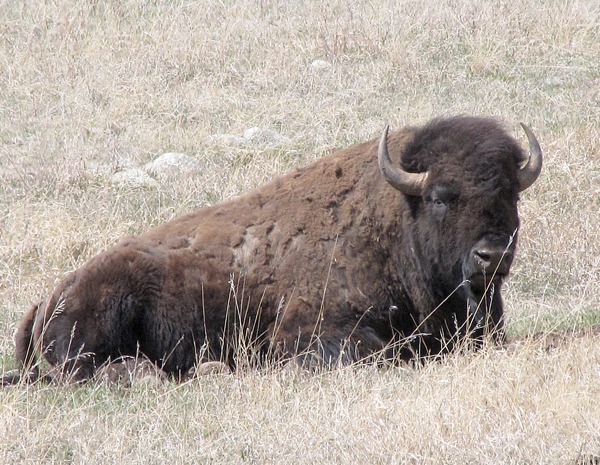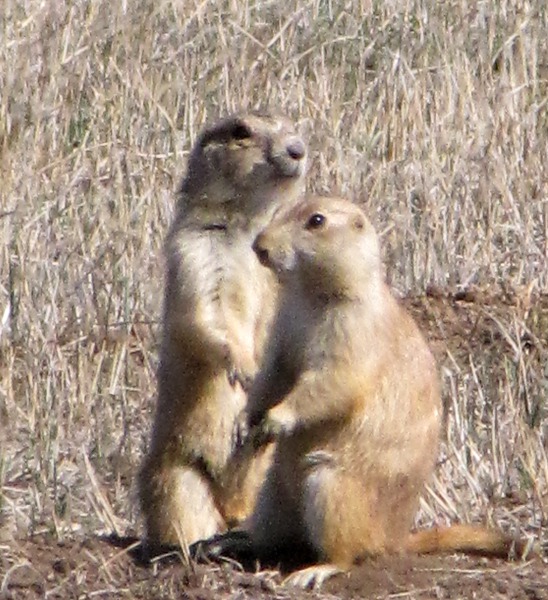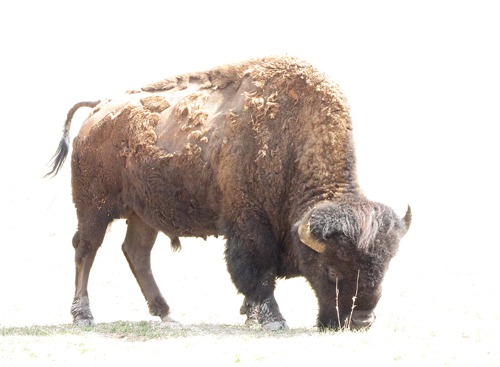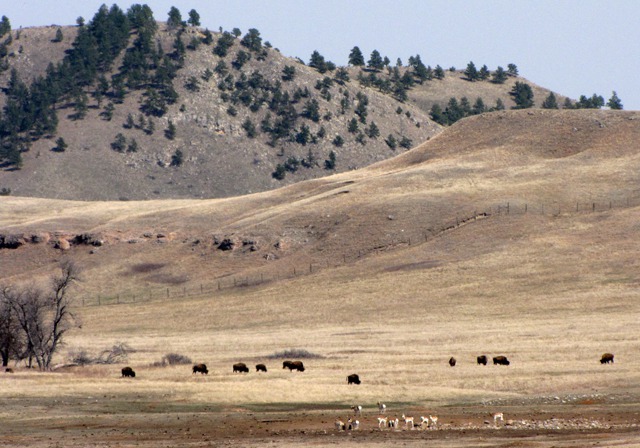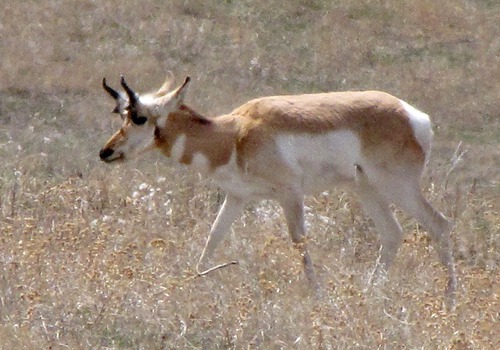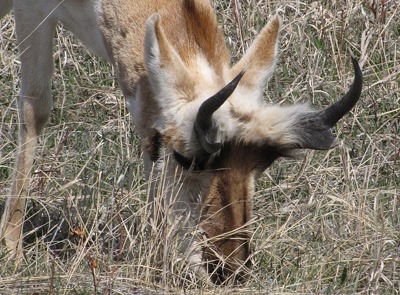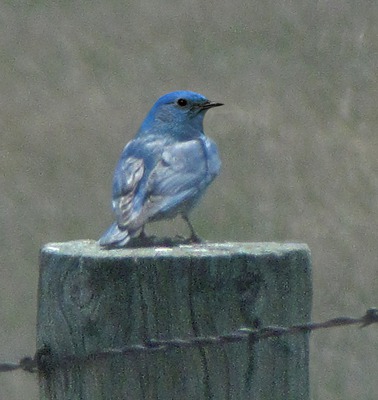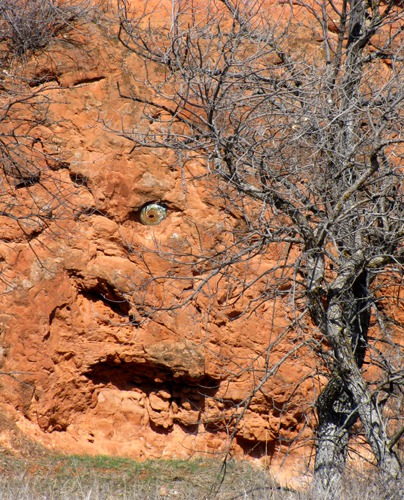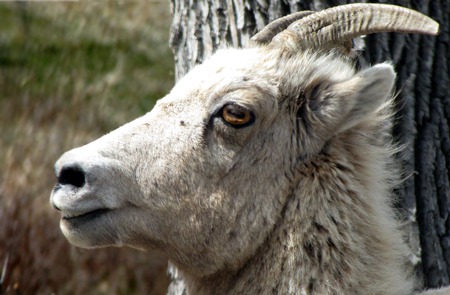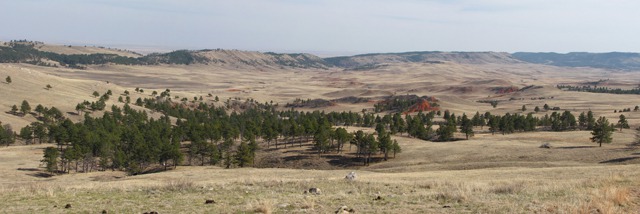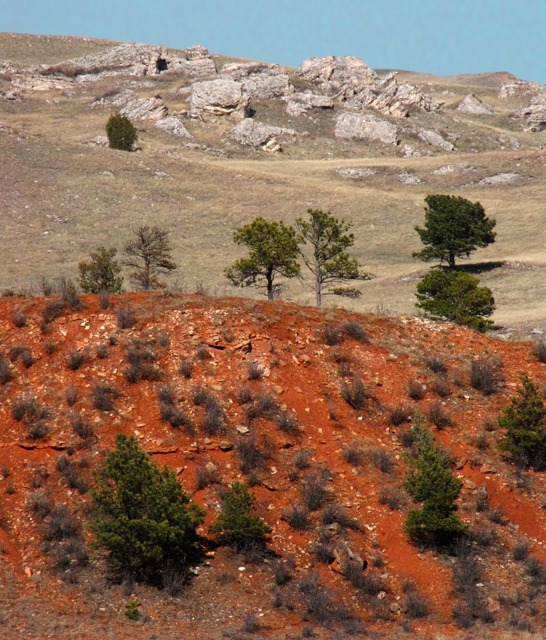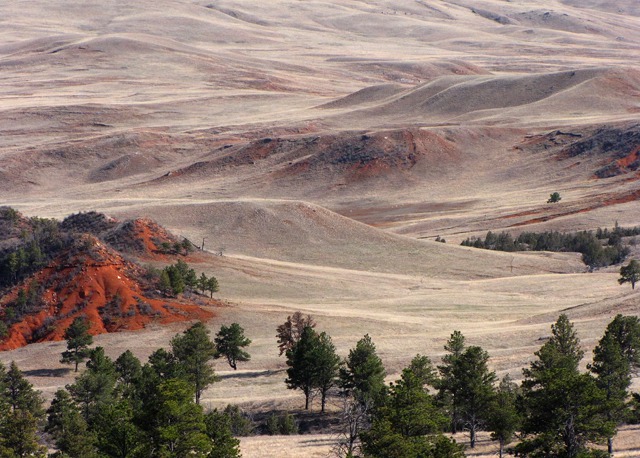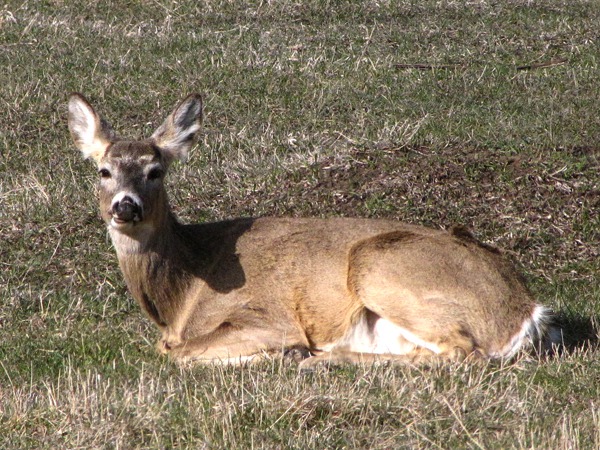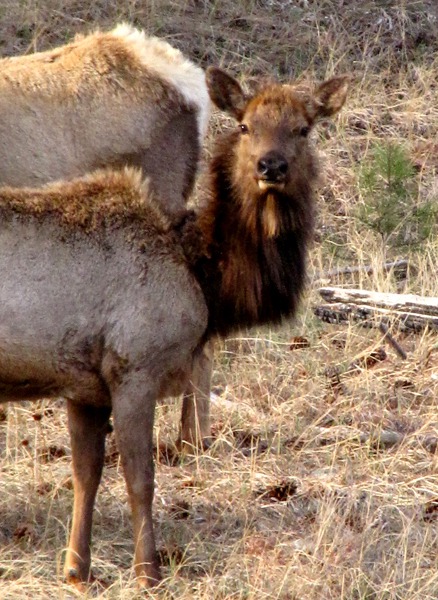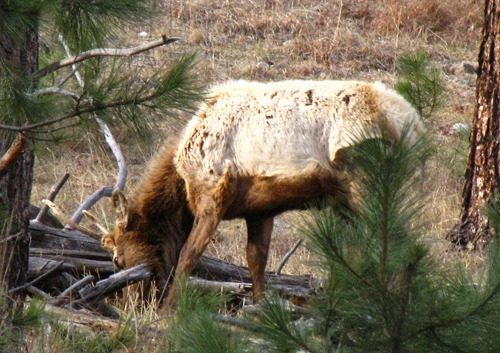Spring in South Dakota, by Brian: 11 April 2010. Ah, spring in South Dakota. After our scheduled trip into the Black Hills on Friday to check on how spring was unfolding got scrambled by wind, rain, clouds, and generally foul weather, we decided to go out yesterday, on a Sunday (we're typically practitioners of "Never on a Sunday" because we loathe crowds) but it was a great day, and there wasn't much traffic.
We headed for Custer State Park and Wind Cave National Park -- a park potpourri of contiguous holdings that make for a very nice getaway when the bulk of the nearly 1.7 million annual visitors aren't sharing the sights. I personally prefer these two parks to Yellowstone when it comes to wildlife sighting opportunities (minus, of course, wolves and grizzlies) and for ready access to great spots. But don't tell a soul.
Bison are one of the large mammal features of both parks. While contiguous, the parks are separated by a very high (and strong) "bison fence" to keep the two genetic strains of bison that separately inhabit the parks in their own yards.
Black-Tailed Prairie Dogs: Acting in concert with the bison, like in the olden days, are towns of prairie dogs. The dogs till the soil and eat the weeds (and most everything else) and then move on to allow lush green growth to follow in their itty bitty footsteps. Bison chomp this new growth and fertilize the soil. A year later you can barely tell the dogs were ever there, and their efforts are being enjoyed by pronghorn, deer, bunnies, and any manner of other enjoyers of lush grass.
"Bison Exposure" happens when you actually want to see what bison look like in your photo. When you shoot them under most conditions (at least with my camera) you can correctly expose the grass they are standing on and the bison is a black lump, or your can expose the bison and the grass turns white. Oh well. I actually kind of like the effect.
Pronghorns: So you take bison, add in antelope (pronghorns to be more precise, since they hail from the goat family -- very fast goats, to be sure) and you have a tiny Black Hills Serengeti.
There is quite a herd of pronghorns in Custer State Park -- so many, in fact, they are thinking of ginning up a hunting season for them. That's going to make my up-close pronghorn photos a lot tougher to come by in the near future.
Mountain Bluebirds: One sign of a springing spring is the return of the blue birds -- mountain bluebirds are common in Custer State Park -- they have a blue bird trail of houses near the landing strip on the Wildlife Loop that are readily inhabited. So we were on the lookout for the bluebird of happiness -- I'm guessing, so called, because when you see them, the odds of another major blizzard that year have dropped below 40 percent.
Of course, every blue bird of happiness has to have an offset. And nearby, we found it.
Rocky Mountain Bighorn Sheep: Something that is less prevalent in the parks than bison and pronghorns are Rocky Mountain big horn sheep. They had nearly 200 head in the park not long ago, but they caught some kind of sheep pneumonia and most died out. Then some greedy cretin poached one of the largest rams in the park with a bow (they think) last winter and further cut into the sheep's chances to rekindle. There are legitimate applications of water boarding.
There are a number of topographies in the park, and lots of gravel roads to get you off the beaten path if you have good tires -- or mediocre tires and know how to change them.
After you go over enough ridges you come to Red Valley -- one of my favorite spots in Custer State Park.
Mule Deer: While the sheep population dwindles, the deer population thrives. They especially love the tender new growth that comes up around the abandoned prairie dog towns.
North American Elk: I'd been despairing for a long time our inability to see some elks. We knew they were here -- often saw their scat but they had already skedaddled by the time we drew nigh in every case. There's an elk season in the park, so they ain't nobody's fools. I used to hunt them with a bow back in the day in Montana -- if you haven't tried it, that's a lot of hunting for very little shooting.
But last night was fortuitous. As we rounded one of the last curves of the road before leaving the park, up on a hillside -- there they were. Elks!
So, elk, deer, bison, antelope, prairie dogs, hawks, a blue bird of happiness, mountain sheep, a middling of go-fast birds we couldn't identify, meadow larks .. it was a great day in the Black Hills.
Story and photos by Brian
Text and photos copyright by GoinMobyle, LLC, 2010



